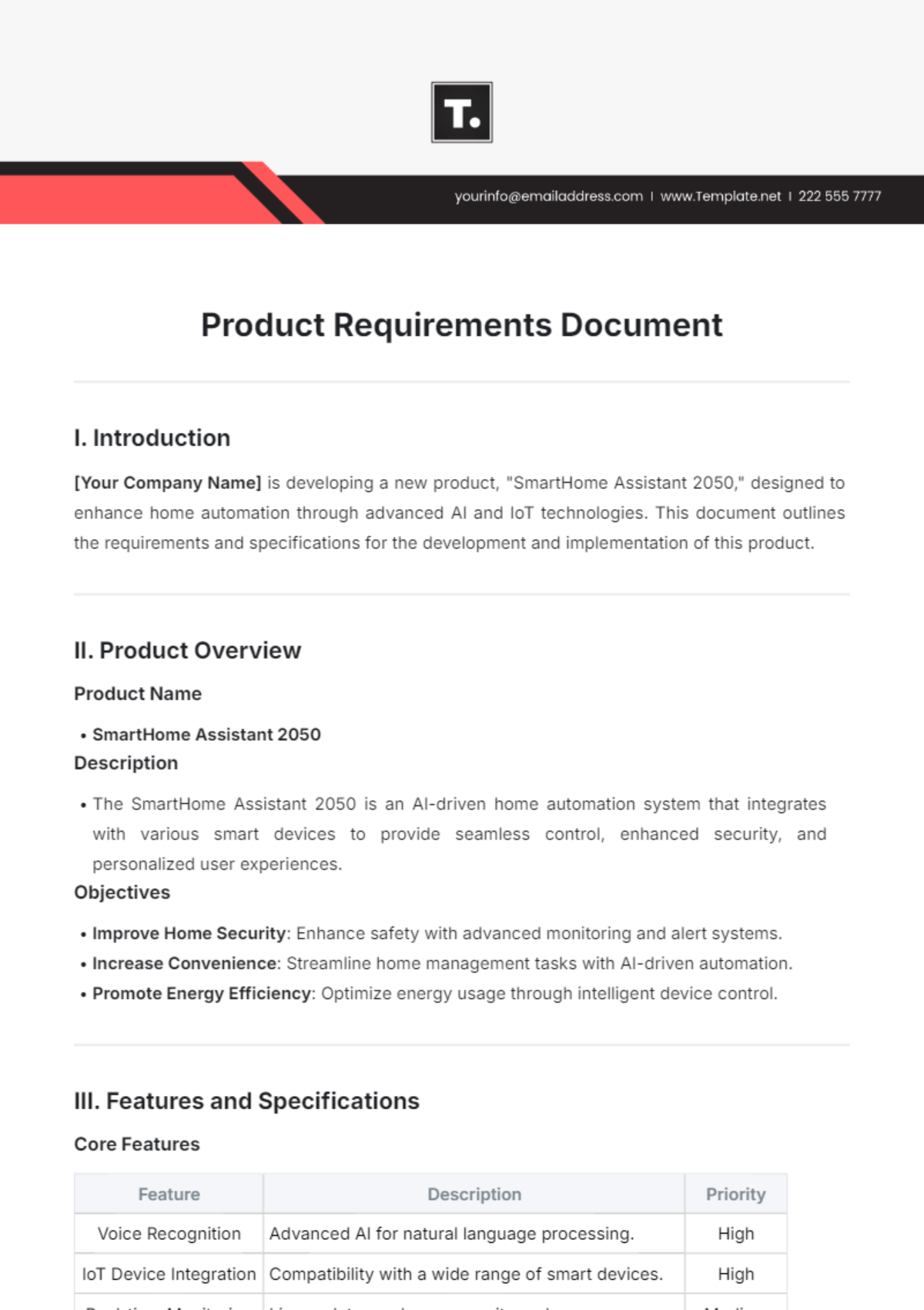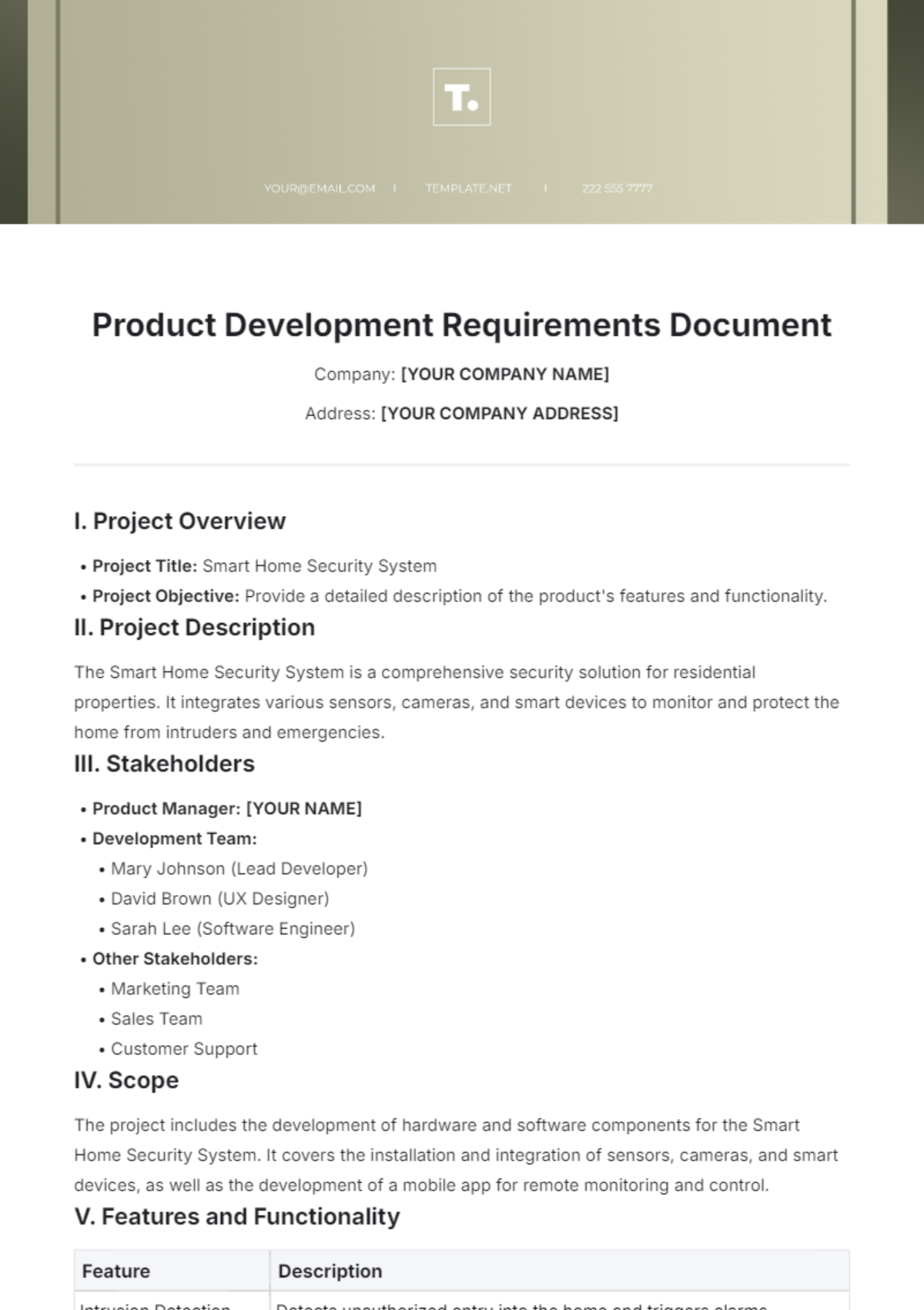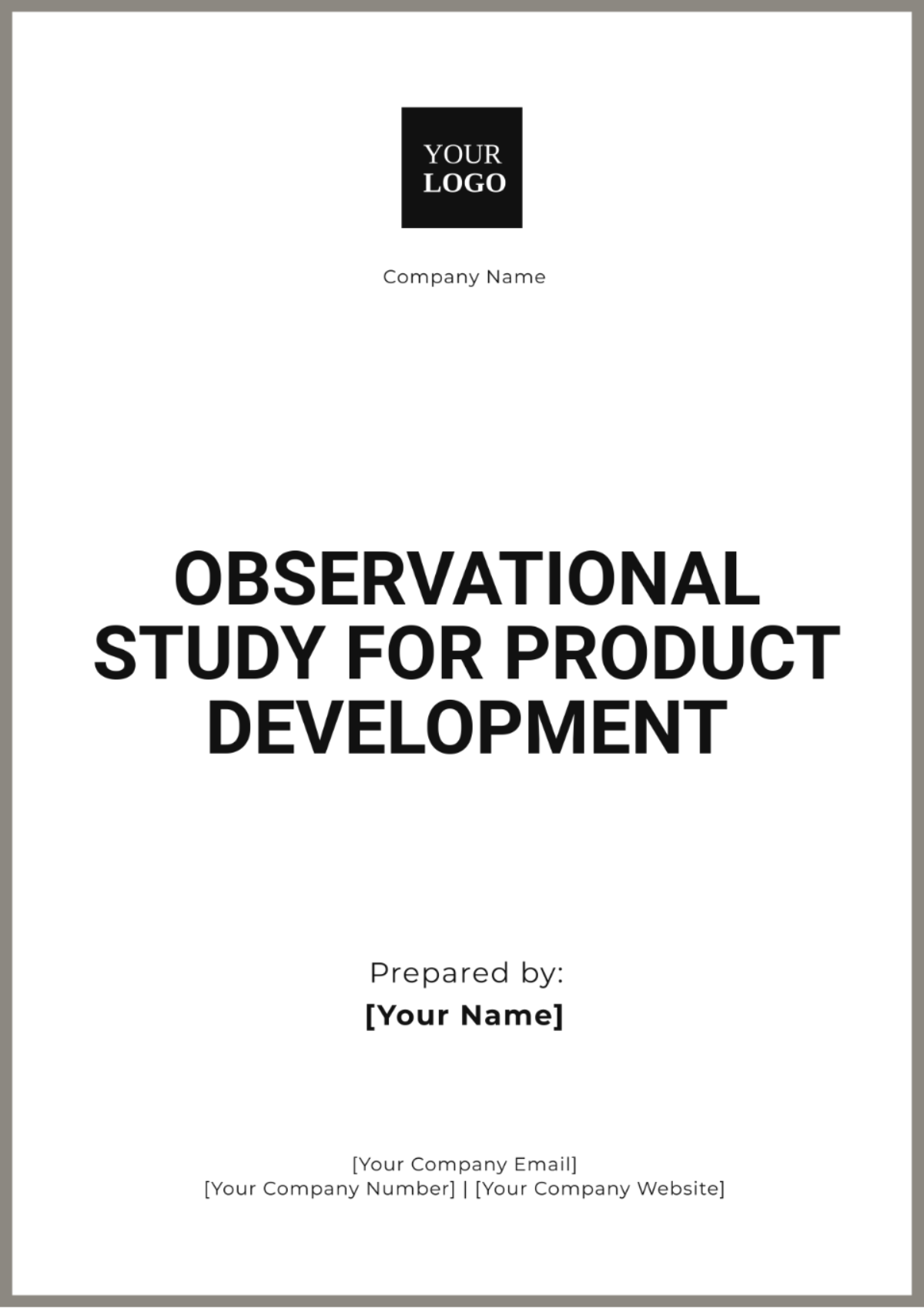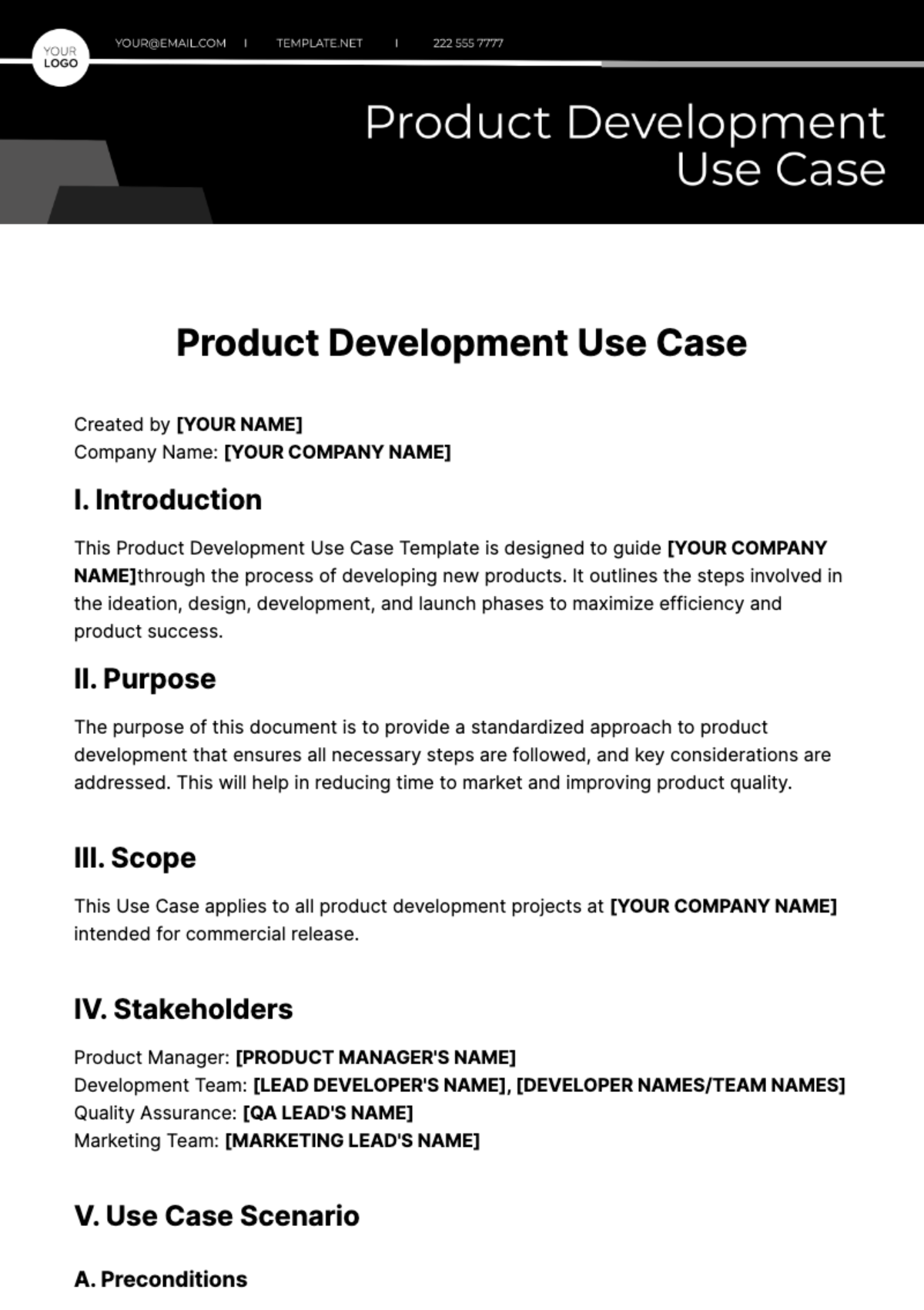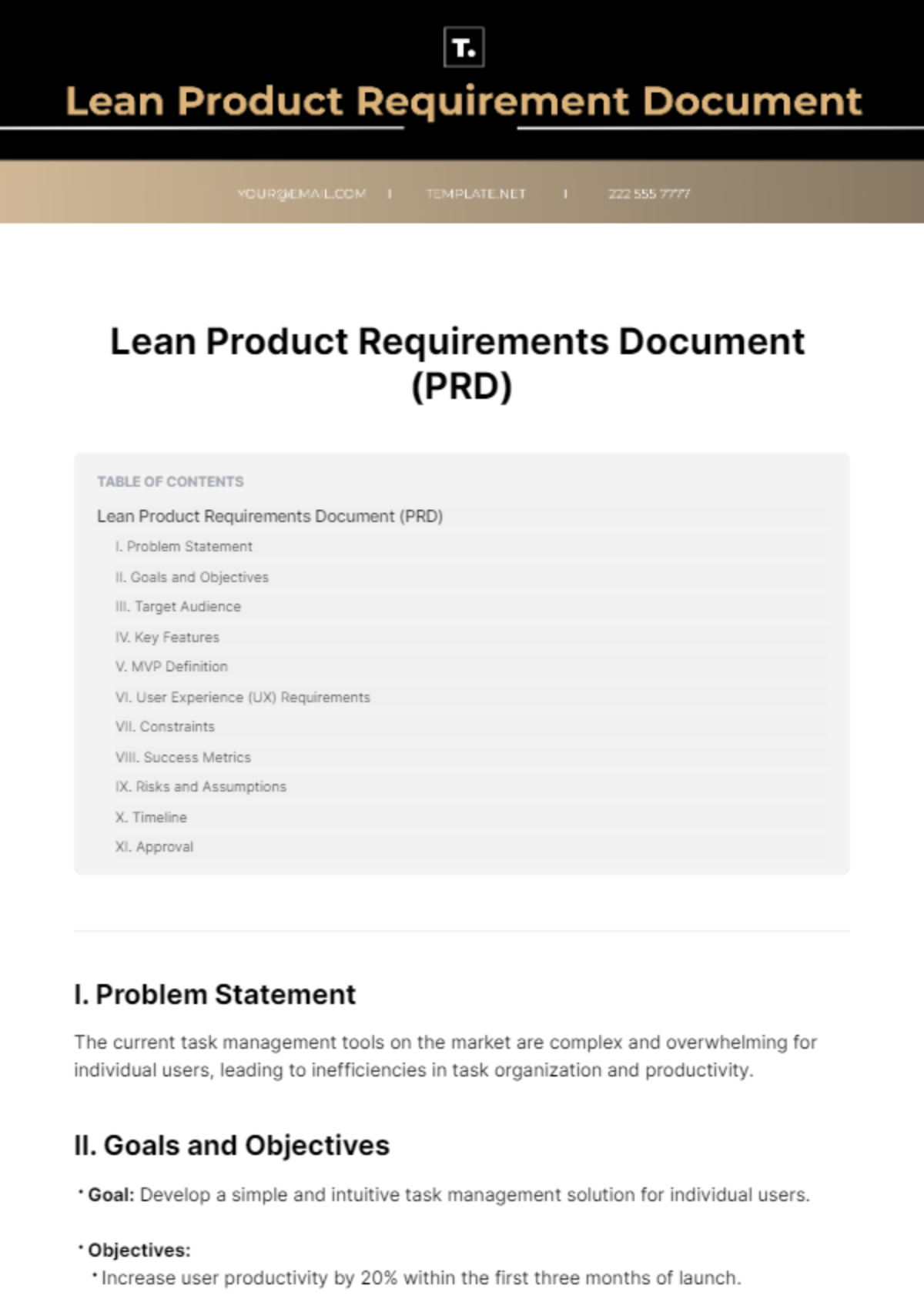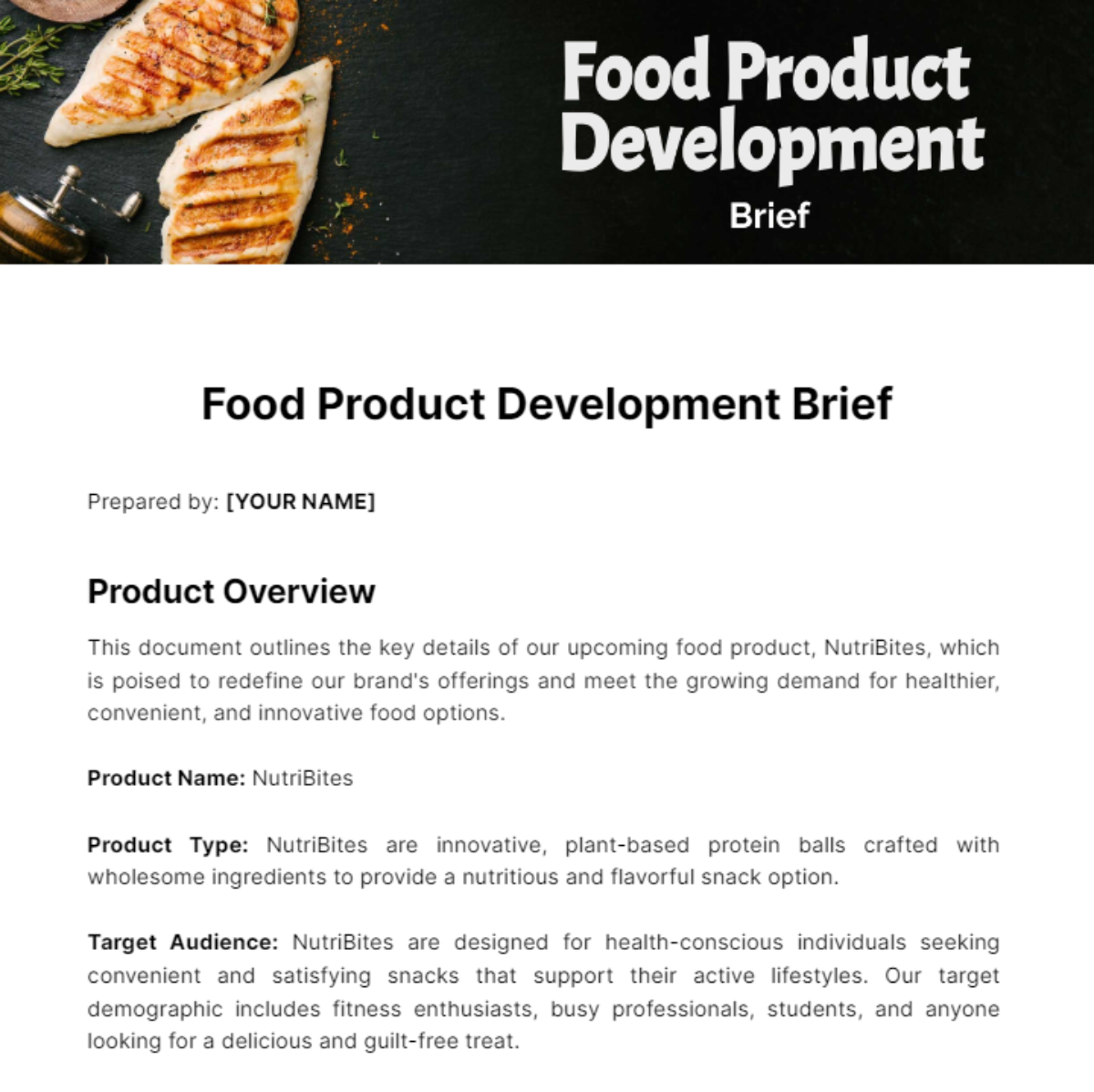Product Development Methodology
I. Introduction
The Product Development Methodology Template provides a structured approach to guide the development of a new product from initial concept through to market launch. This methodology aims to ensure a systematic and organized process, facilitating effective collaboration and efficient resource management.
II. Phases
A. Concept Development
Objective: Identify market needs, generate ideas, and assess feasibility.
Activities:
Conduct market research and analyze trends.
Brainstorm product ideas and evaluate potential.
Develop a business case and feasibility study.
Deliverables:
Market research report.
Concept proposal document.
Feasibility assessment.
B. Design and Prototyping
Objective: Develop product design and create prototypes.
Activities:
Create initial design sketches and wireframes.
Develop prototypes and conduct user testing.
Refine design based on feedback and testing results.
Deliverables:
Design specifications.
Prototype models.
User feedback report.
C. Development
Objective: Finalize product design and begin technical development.
Activities:
Detailed design and engineering.
Develop and test product components.
Integrate and assemble the product.
Deliverables:
Engineering drawings.
Completed product.
Development progress report.
D. Testing
Objective: Ensure product quality and performance.
Activities:
Conduct quality assurance testing and inspections.
Perform beta testing with selected users.
Gather and analyze feedback, make necessary adjustments.
Deliverables:
Quality assurance test results.
Beta testing feedback.
Final product adjustments report.
E. Launch
Objective: Prepare for and execute the product launch.
Activities:
Develop and implement marketing strategies.
Plan and execute product launch events.
Coordinate distribution and sales channels.
Deliverables:
Marketing and launch plan.
Launch event materials.
Distribution and sales strategy.
F. Post-Launch
Objective: Monitor product performance and address issues.
Activities:
Track product performance metrics and sales data.
Provide customer support and gather feedback.
Implement iterative improvements based on feedback.
Deliverables:
Performance metrics report.
Customer support logs.
Improvement plan.
III. Milestones and Deliverables
Phase | Milestone | Deliverable | Target Date |
|---|---|---|---|
Concept Development | Market Research Completed | Market research report | [Date] |
Design and Prototyping | Prototype Ready | Prototype models | [Date] |
Development | Final Product Design Approved | Engineering drawings | [Date] |
Testing | Quality Assurance Completed | Quality assurance test results | [Date] |
Launch | Product Launch | Launch event materials | [Date] |
Post-Launch | Performance Review | Performance metrics report | [Date] |
IV. Roles and Responsibilities
Project Manager: Oversees project progress, coordinates team efforts, and manages resources.
Product Designer: Develops product concepts, designs prototypes, and refines designs.
Engineer: Handles technical development, engineering, and product assembly.
Quality Assurance Specialist: Conducts testing and ensures product quality.
Marketing Specialist: Develops and implements marketing strategies and launch plans.
Customer Support Representative: Manages customer feedback and support post-launch.
V. Resources and Budget
Resource Allocation: Assign team members, tools, and technologies as per the project requirements.
Budget: Allocate budget for research, design, development, testing, marketing, and post-launch activities.
VI. Risk Management
Potential Risks:
Delays in development.
Budget overruns.
Technical challenges.
Mitigation Strategies:
Develop contingency plans.
Monitor progress and adjust timelines as needed.
Regularly review and manage budget.
VII. Evaluation and Metrics
Success Criteria:
Achievement of project milestones on time.
Positive feedback from user testing.
Meeting sales and performance targets.
Evaluation Methods:
Regular progress reviews.
Performance metrics analysis.
Post-launch feedback collection.
VIII. Documentation
Required Documentation:
Market research reports.
Design specifications.
Test results and feedback reports.
Marketing and launch materials.
Templates and Forms:
Concept proposal template.
Design review checklist.
Testing report template.
